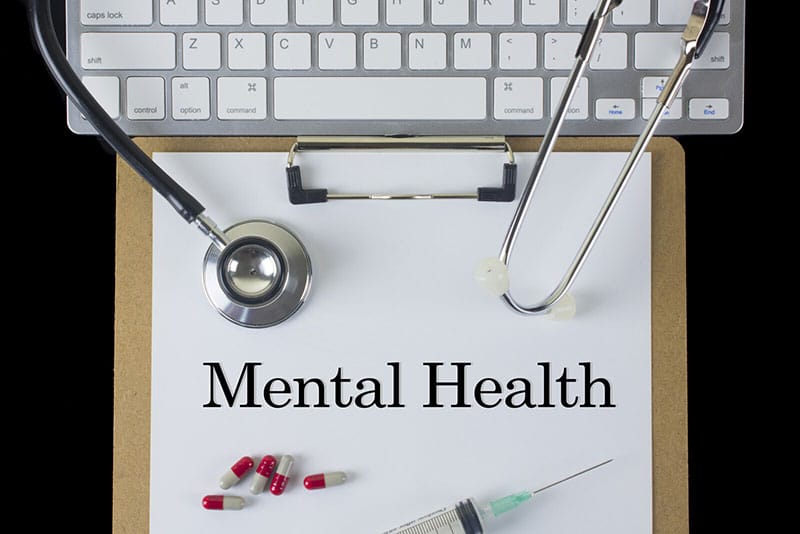Determination of Death / Informed Consent

(Determination of Death / Informed Consent) After studying the course materials located on Module 6: Lecture Materials & Resources page, answer the following:
Uniform Determination of Death Act (UDDA):
- How was this law was created?
The Uniform Determination of Death Act (UDDA) was developed through a collaborative effort by legal and medical professionals to address the challenges posed by advancements in medical technology. Here’s how the UDDA was created:
- Background and Need: In the mid-20th century, medical advancements such as ventilators and other life-sustaining technologies raised questions about when a person should be considered dead. Traditional definitions of death centered around cardiopulmonary criteria (cessation of heartbeat and breathing), but these technologies could sustain bodily functions artificially even after brain function had ceased.
- Medical and Legal Collaboration: Medical professionals, bioethicists, and legal experts collaborated to establish a framework that could legally recognize brain death as a criterion for death. This collaboration aimed to reconcile medical understanding with legal definitions, ensuring clarity in end-of-life decisions and organ donation protocols.
- Development of the UDDA: The UDDA was drafted by the National Conference of Commissioners on Uniform State Laws (NCCUSL), an organization that develops uniform laws for adoption by states across the U.S. The UDDA was officially approved by the NCCUSL in 1980.
- Key Provisions of the UDDA: The Act defines death as the irreversible cessation of all functions of the entire brain, including the brain stem. It establishes brain death as a legal standard for determining death, alongside traditional cardiopulmonary criteria.
- State Adoption: Following its approval by the NCCUSL, the UDDA was recommended for adoption by individual states. By 1981, a significant number of states had enacted the UDDA or similar legislation, providing uniformity in the determination of death across state boundaries.
- Impact and Evolution: The UDDA has had a profound impact on medical practice, bioethical discourse, and legal standards related to end-of-life care. It continues to guide medical professionals and legal authorities in making critical decisions regarding death determination, organ donation, and the ethical management of patients in critical condition. (Determination of Death / Informed Consent)
In summary, the Uniform Determination of Death Act (UDDA) was created through collaboration between medical and legal experts to establish brain death as a legal criterion for death, addressing the challenges posed by advancing medical technology and ensuring consistency in death determination practices across the United States.
- What is the Legal definition of death?
The legal definition of death, as defined by the Uniform Determination of Death Act (UDDA), varies by jurisdiction but commonly includes two main criteria:
- Cardiopulmonary Criteria: Death is defined as the irreversible cessation of circulatory and respiratory functions. This means the heart stops beating (cardiac arrest) and breathing ceases (respiratory arrest).
- Neurological Criteria (Brain Death): Death can also be legally determined as the irreversible cessation of all functions of the entire brain, including the brain stem. Brain death signifies the complete absence of brain activity, including reflexes that control essential bodily functions like breathing.
In practice, the legal definition of death may incorporate one or both criteria, depending on local laws and medical standards. The determination of death is crucial for various legal and medical purposes, including end-of-life decisions, organ transplantation protocols, inheritance matters, and the issuance of death certificates. It ensures clarity and consistency in recognizing when an individual is legally deceased.
- Describe or define dying within context of faith, basic principle about human life
Dying within the context of faith encompasses spiritual beliefs and principles about the end of human life. Across various religions and spiritual traditions, several basic principles about human life and dying are commonly upheld:
- Sacredness and Dignity: Many faith traditions emphasize the inherent sacredness and dignity of human life from birth to death. Dying is viewed as a natural part of life’s cycle, deserving of respect and reverence.
- Purpose and Meaning: Faith often provides a framework for understanding the purpose and meaning of human existence, including life’s end. Dying may be seen as a transition or passage to another spiritual state or realm, guided by divine purpose.
- Compassion and Care: Compassionate care for the dying is frequently emphasized, reflecting values of empathy, kindness, and support for individuals and their loved ones during the end-of-life process.
- Eternal Soul or Spirit: Many faiths believe in an eternal soul or spirit that transcends physical death. Dying is seen as a transformation where the soul transitions to a spiritual realm or continues its journey in accordance with spiritual teachings.
- Ethical Considerations: Ethical principles guide decisions surrounding dying, including considerations of medical interventions, end-of-life care, and the ethical implications of prolonging life versus allowing a natural death.
- Community and Rituals: Faith communities often provide spiritual and communal support through rituals, prayers, and ceremonies that honor the dying person and offer solace to those grieving.
Dying within the context of faith is shaped by beliefs in the sacredness of life, spiritual purposes, compassionate care, ethical considerations, and communal support. These principles guide how individuals and communities understand and navigate the process of dying with dignity and respect. (Determination of Death / Informed Consent)
Bioethical Analysis of Pain Management – Pain Relief
- What is the difference between Pain and suffering? Explain Diagnosis or Prognosis. Define both. Define Ordinary / Extraordinary means of life support.
Pain and suffering are distinct yet interconnected experiences in the realm of healthcare and ethical decision-making.
Pain: Pain refers to a physical sensation typically caused by injury, illness, or medical treatment. It is a subjective experience that can range from mild discomfort to severe agony. Pain is often categorized into acute (short-term and intense) or chronic (long-lasting) forms. Medical professionals assess pain through patient reports, physical examinations, and sometimes diagnostic tests to determine its cause and severity.
Suffering: Suffering extends beyond physical discomfort to encompass emotional, psychological, and existential distress. It involves the emotional response to pain or other adverse circumstances, impacting a person’s overall well-being and quality of life. Suffering may arise from various sources, including physical pain, loss, fear, or existential uncertainty. Unlike pain, suffering is more subjective and can vary widely among individuals.
Diagnosis and Prognosis:
Diagnosis: Diagnosis refers to the identification of a medical condition or disease based on signs, symptoms, and diagnostic tests. It involves determining the nature and cause of a patient’s health issue through medical evaluation and assessment. A diagnosis guides treatment decisions and interventions aimed at alleviating symptoms and addressing underlying health concerns.
Prognosis: Prognosis refers to the expected course and outcome of a disease or medical condition. It involves predicting the likely progression of the illness, potential complications, and the anticipated response to treatment. Prognosis provides patients and healthcare providers with information about the expected recovery, survival rates, and potential long-term effects of the condition.
Ordinary vs. Extraordinary Means of Life Support:
Ordinary Means of Life Support: Ordinary means of life support refer to medical interventions and treatments that are considered standard and reasonably beneficial in supporting and prolonging life. These may include measures such as medications, hydration, nutrition, and basic medical interventions necessary to sustain bodily functions. Ordinary means of life support are generally ethically obligatory unless they impose excessive burden or are ineffective in achieving their intended purpose.
Extraordinary Means of Life Support: Extraordinary means of life support encompass medical interventions that are excessively burdensome, overly invasive, or of doubtful effectiveness in improving a patient’s condition or quality of life. Examples may include aggressive forms of life support such as mechanical ventilation, cardiopulmonary resuscitation (CPR), or experimental treatments with uncertain outcomes. The decision to utilize extraordinary means of life support is complex and typically requires careful consideration of medical, ethical, and patient-centered factors.
In ethical dilemmas surrounding pain, suffering, diagnosis, prognosis, and life support, healthcare providers must balance medical expertise with patient preferences, quality of life considerations, and ethical principles to ensure compassionate and appropriate care. (Determination of Death / Informed Consent)
- Explain the bioethical analysis of Killing or allowing to die?
Bioethical analysis of “killing or allowing to die” involves examining ethical dilemmas surrounding end-of-life decisions and the distinction between actively causing death and withholding or withdrawing life-sustaining treatments:
Killing: Killing refers to intentionally causing the death of a patient through direct actions, such as administering a lethal dose of medication or performing euthanasia. It involves a deliberate act to end life.
Allowing to Die: Allowing to die pertains to withholding or withdrawing life-sustaining treatments or interventions that artificially prolong life. This may include decisions to discontinue ventilator support, dialysis, or feeding tubes, allowing the natural progression of the underlying condition.
Bioethical Considerations: Bioethically, the distinction between killing and allowing to die is crucial. Ethical principles such as respect for autonomy, beneficence, non-maleficence, and justice guide decisions about the appropriateness of these actions. Healthcare providers and patients navigate complex moral terrain when determining whether to intervene actively to end life or to respect the natural course of dying.
Ethical Framework: In ethical analysis, considerations of patient autonomy—the right to make informed decisions about one’s own care—weigh heavily against the moral duties of healthcare providers to avoid harm and promote well-being. The context of each situation, including patient preferences, prognosis, and quality of life considerations, influences whether interventions are deemed ethically permissible or morally objectionable.
Navigating the ethical implications of killing versus allowing to die requires a balanced approach that respects patient wishes, upholds ethical principles, and considers the broader implications for healthcare practice and societal norms surrounding end-of-life care.
- Define both (Killing & allowing to die) and explain which one is ethically correct and why?
Killing: Killing involves intentionally causing the death of a person through direct actions, such as administering lethal drugs or performing euthanasia. It requires an active intervention to end someone’s life.
Allowing to Die: Allowing to die refers to withholding or withdrawing life-sustaining treatments or interventions that artificially prolong life. This includes decisions to discontinue ventilators, feeding tubes, or other medical interventions, allowing the natural process of dying to occur.
Ethical Considerations
Ethical Correctness: In bioethics, allowing to die is generally considered ethically correct in situations where continued medical interventions offer no benefit to the patient or impose excessive burden, and where the patient or their surrogate has made an informed decision to forego such treatments. This approach respects the patient’s autonomy—the right to make decisions about their own medical care—and avoids the intentional infliction of harm associated with killing. It aligns with the ethical principles of beneficence (acting in the patient’s best interest) and non-maleficence (avoiding harm).
Why Allowing to Die is Ethically Preferred: Allowing to die respects the natural process of dying and acknowledges that death is an inevitable part of life. It prioritizes patient comfort and dignity by focusing on palliative care and quality of life measures rather than prolonging suffering through ineffective or burdensome treatments. Ethically, this approach balances respect for patient autonomy with the moral responsibility of healthcare providers to provide compassionate care and avoid unnecessary interventions.
Ethically, allowing to die is preferred over killing because it upholds principles of autonomy, beneficence, and non-maleficence, while respecting the sanctity of life and the dignity of dying patients. It requires careful consideration of patient preferences, medical indications, and the broader ethical implications of end-of-life care decisions.
The Catholic declaration on life and death typically emphasizes the sanctity and dignity of human life from conception to natural death. It often discusses ethical considerations surrounding issues like euthanasia, assisted suicide, and end-of-life care, advocating for the preservation of life and respect for human dignity throughout all stages. (Determination of Death / Informed Consent)
Free and Informed Consent from the Catholic Perspective:
In Catholic teachings, free and informed consent is essential in matters related to healthcare decisions, including medical treatments and interventions. It requires that individuals have the capacity to understand relevant information about their medical condition, proposed treatments, potential risks and benefits, and alternative options. They must also freely agree to or refuse medical interventions based on this understanding without coercion or undue influence.
From a Catholic perspective, free and informed consent respects the dignity and autonomy of the individual, aligning with the principle that humans are moral agents capable of making decisions in accordance with their conscience and religious beliefs. This concept ensures that healthcare decisions are made with respect for the person’s inherent dignity and in line with ethical principles that prioritize the well-being of both the patient and the broader community.
- What is free and informed consent from the Catholic perspective? Define Proxy and Surrogate. Explain the Advance Directives Living Will, PoA or Durable PoA, and ADNR.
Proxy and Surrogate:
Proxy: In the context of healthcare, a proxy (or healthcare proxy) is an individual designated by a patient to make medical decisions on their behalf if they become unable to do so themselves. This person is often chosen ahead of time and should be someone trusted by the patient to act in accordance with their wishes and best interests.
Surrogate: A healthcare surrogate, similar to a proxy, is someone appointed to make healthcare decisions for a patient who is unable to make decisions for themselves due to incapacitation or inability to communicate. The surrogate is typically chosen based on their relationship to the patient and their ability to advocate for the patient’s preferences.
Advance Directives:
Living Will: A living will is a legal document that outlines a person’s preferences regarding medical treatments and interventions they wish to receive or avoid if they become incapacitated and unable to communicate. It may specify preferences regarding life-sustaining treatments, end-of-life care, and other medical decisions.
Power of Attorney (PoA) / Durable Power of Attorney (DPOA): A power of attorney (PoA) for healthcare allows an individual (the principal) to appoint a trusted person (the agent or attorney-in-fact) to make healthcare decisions on their behalf if they are unable to do so. A durable power of attorney specifically remains valid even if the principal becomes incapacitated.
Advance Directive for Natural Death (ADNR): Also known as a do-not-resuscitate (DNR) order, an advance directive for natural death is a medical order written by a healthcare professional based on a patient’s wishes. It instructs healthcare providers not to perform cardiopulmonary resuscitation (CPR) if the patient’s heart stops beating or if they stop breathing.
These documents and designations are essential in healthcare planning, ensuring that patients’ wishes regarding medical care are respected and followed when they are unable to communicate their preferences due to illness or incapacity. (Determination of Death / Informed Consent)
Do you need a similar assignment done for you from scratch? Order now!
Use Discount Code "Newclient" for a 15% Discount!











:max_bytes(150000):strip_icc()/alternative-therapies-types-and-uses-5207962_final-406a673fa76e41d9add8ce4771222dd0.png)

